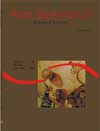<b>Ecomorphology of fish locomotion with focus on neotropical species</b> - DOI: 10.4025/actascibiolsci.v27i4.1271
Abstract
Ecomorphology is the study between organism form and environmental factors. In this context, studies of functional morphology of locomotion provide explanations of result and cause to the phenotype-environment interactions. The object of this paper was to review form and function relation of the extern structures of the morphology related to trunk and fins. The structures responsible for propulsion can be divided in trunk and fins. On the whole, the body can be fusiform, that offers the fish higher manobrability, or depressed, with better performance to explore substrate. According to these morpho-function aspects, the fins follow an evolution trend. Nevertheless, each one of the fins and the trunk can be used as the main organs of the propulsion making undulatory and oscillatory movements. On the whole, it is possible to detect an evolution trend from locomotion by undulation of the entire body to locomotion by the oscillation of the caudal finDownloads
Download data is not yet available.
Published
2008-03-24
How to Cite
Breda, L., Oliveira, E. F. de, & Goulart, E. (2008). <b>Ecomorphology of fish locomotion with focus on neotropical species</b> - DOI: 10.4025/actascibiolsci.v27i4.1271. Acta Scientiarum. Biological Sciences, 27(4), 371-381. https://doi.org/10.4025/actascibiolsci.v27i4.1271
Issue
Section
Ecology and Limnology
DECLARATION OF ORIGINALITY AND COPYRIGHTS
I Declare that current article is original and has not been submitted for publication, in part or in whole, to any other national or international journal.
The copyrights belong exclusively to the authors. Published content is licensed under Creative Commons Attribution 4.0 (CC BY 4.0) guidelines, which allows sharing (copy and distribution of the material in any medium or format) and adaptation (remix, transform, and build upon the material) for any purpose, even commercially, under the terms of attribution.
Read this link for further information on how to use CC BY 4.0 properly.
0.6
2019CiteScore
31st percentile
Powered by 

0.6
2019CiteScore
31st percentile
Powered by 











1.png)




3.png)













